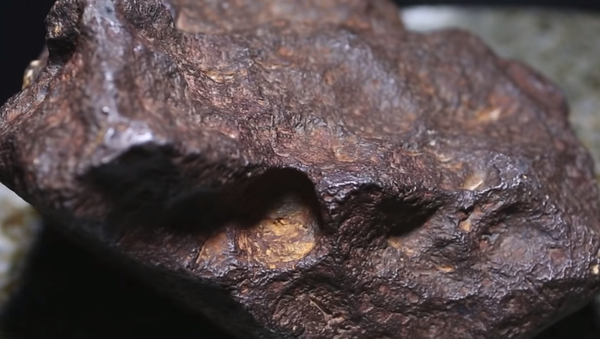A mysterious alien mineral was discovered inside a meteorite which landed on Earth found almost 70 years ago, according to a report by Space.com on Thursday.
The mineral does not occur naturally on earth and has only been observed in a man-made form, according to The Age.
Scientists have dubbed it 'edscottite', after Edward R.D. Scott, a cosmochemist at Manoa's University of Hawaii.
Scott was the first to discover the mineral's formula as far back as the 1970s as a lab creation, according to author Chi Ma, a senior staff scientist and mineralogist at Caltech.
The mineral is made up of a special blend of carbon and iron, previously only available through artificial creation in a lab or inside smelters and was given no name, which is standard procedure when labelling any non-naturally occurring mineral.
Ma told Live Science that the Wedderburn meteorite likely split off from an asteroid which "somehow got knocked off its course and headed to Earth."
"Every mineral has a voice and its own story to tell," Ma said. "Each new E.T. mineral represents a distinctive formation environment and can provide insights into processes active in the solar nebula, on asteroids, the moon and Mars."
He went on to explain that it most probably came from the shattered remains of a small planet which collided with another celestial object and resulted after the elements themselves slowly cooled down.
A newly discovered mineral called edscottite may have come from the core of a destroyed planet. Via @smithsonian https://t.co/Aw4PcqBar0 pic.twitter.com/mkwIaNwAPG
— RealClearScience (@RCScience) September 5, 2019
The meteorite from which the mineral was discovered was named 'Wedderburn' after the town where it was seen in Victoria, Australia in 1951.
The rock was "lemon-sized" and was around 210 grams (7.4 ounces) in weight, according to the Museums Victoria Collections - the space rock's current home.
The Museum of Victoria's senior curator of geosciences, Stuart Mills, said that the finding is extremely rare, explaining:
“We have discovered 500,000 to 600,000 minerals in the lab, but fewer than 6,000 that nature’s done itself.”
The Wedderburn meteorite is coloured red and black and covered in scars due to it's long travel through space.
Researchers from around the world have examined it to try and decipher the meteorites content and its origins.
Using an electron-beam microscope and electron probe, researchers at the California Institute of Technology conducted a test on a fragment of the space rock in 2018 and discovered the unknown mineral.




